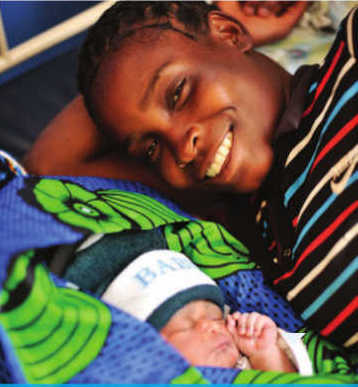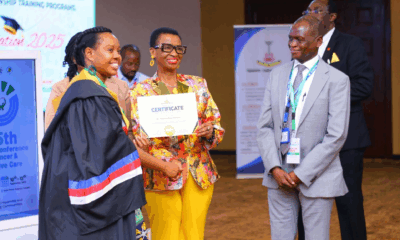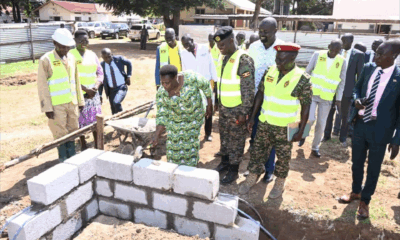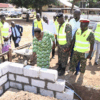Health
US-led initiative cuts maternal deaths in Uganda by one third

Happy mother
The programme dubbed ‘Saving Mothers Giving Life’, Giving Life, which—at its core—exemplifies our commitment to ending preventable child and maternal death around the world.”
The high rate of women dying from complications of pregnancy and childbirth remains a major challenge in Uganda and across sub-Saharan Africa, where many maternal deaths occur.
The United Nations Development Programme (UNDP) Uganda progress report on the implementation of Millennium Development Goals, by 2010, Uganda had made very little progress on the goal of reducing by three quarters the number of mothers who die during pregnancy and childbirth.
The UNDP report noted that as many as 435 maternal deaths out of every 100,000 live births were still being recorded as of 2010. This translates to 16 women dying during childbirth every day in Uganda both of which have improved only marginally.
The report noted that the country was unlikely to meet its MDG 5 target of cutting the needless deaths to at least 131 by 2015 and hence needed special attention in especially increasing the number of mothers who delivery with the help of skilled midwives and in a health facility.
The Saving Mothers Giving Life report indicates that the approach – an intensive, “big push” effort to strengthen health services focused on the critical period of labor, delivery and the first 48 hours postpartum – can produce impressive and quick results in saving women’s lives. Reducing maternal mortality is considered particularly important, as it is regarded as a sentinel indicator of the overall functioning of health systems.
It is perhaps not surprising therefore that Saving Mothers Giving Life’s key interventions that include eliminating the three major delays that prevent women from accessing maternal health services: delay in seeking services, delay in reaching services and delay in receiving quality care, has recorded such success as it addresses key gaps in the delivery of quality maternal health as pointed out by the UNDP report.
Dr. Jane Ruth Aceng, the Director General of the Ministry of Health said: “Uganda has made significant progress in improving maternal health outcomes over the past two decades,” said, “but too many women still face life-threatening circumstances when they give birth. Our partnership with Saving Mothers has helped us augment existing national programs which seek to ensure safe and healthy pregnancies and childbirths throughout the country.”
According to an evaluation led by the Centers for Disease Control and Prevention (CDC) and USAID, Saving Mothers interventions have generated a range of positive outcomes associated with improved maternal health outcomes, including:
Rise in deliveries taking place in a health facility (62% increase in Uganda, 35% increase in Zambia);
This is thanks to a number of incentives made available by the programme which include the availability of skilled and motivated birth attendants, improved facilities and infrastructure at health centres, including the availability of water, electricity and renovated maternity waiting homes.
The programme also offers incentives such as rewards to people like boda boda riders who help to transport pregnant women to health facilities. The programme is said to have helped to double the number of facilities that offer Basic Emergency Obstetric and Newborn Care in the four pilot districts in Uganda, on top of improving emergency referrals.
Saving mothers has also helped to train thousands of community health workers who sensitize women, their families and community leaders about the importance of delivering at a health facility that is managed by a skilled birth attendant.
The evaluation report further noted an increase in testing and treatment for HIV/AIDS (28% increase in treatment for the prevention of mother-to-child transmission of HIV in Zambia).
In Uganda, the programme is being implemented in four rural districts of Kabarole, Kibaale, Kamwenge, and Kyenjojo.
Comments


















